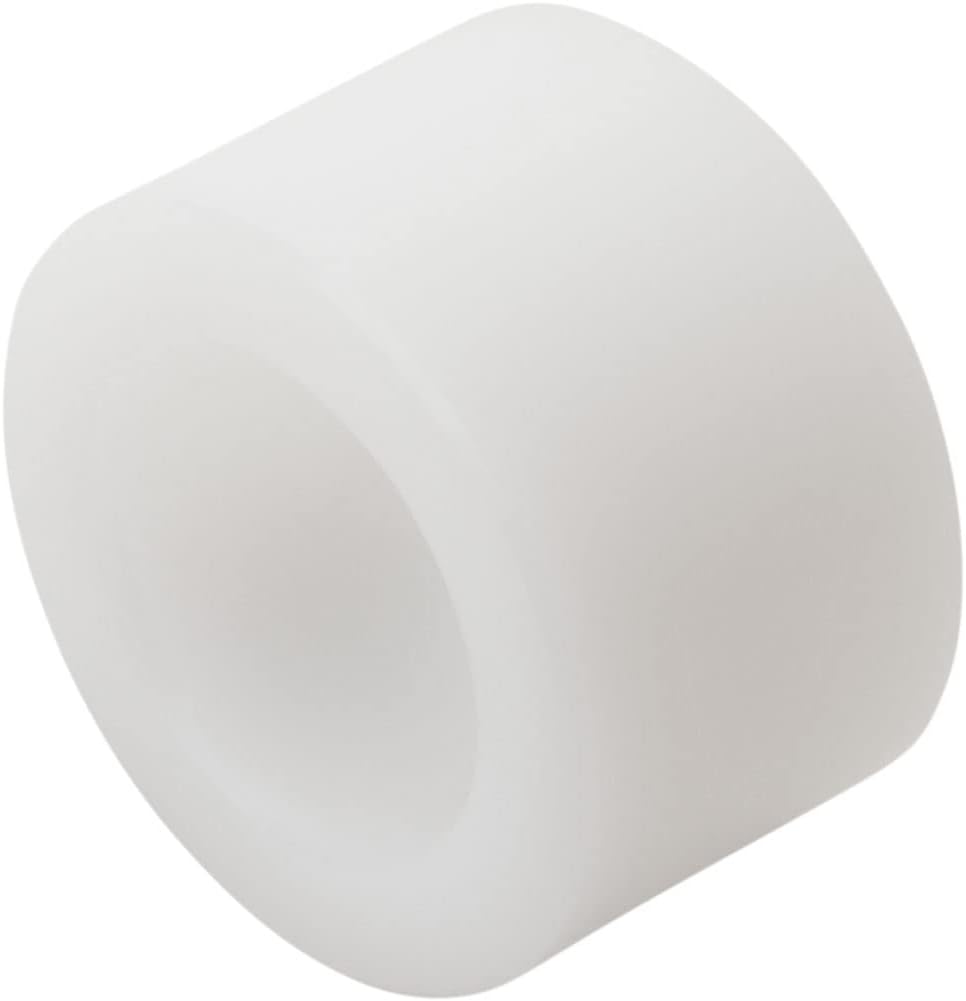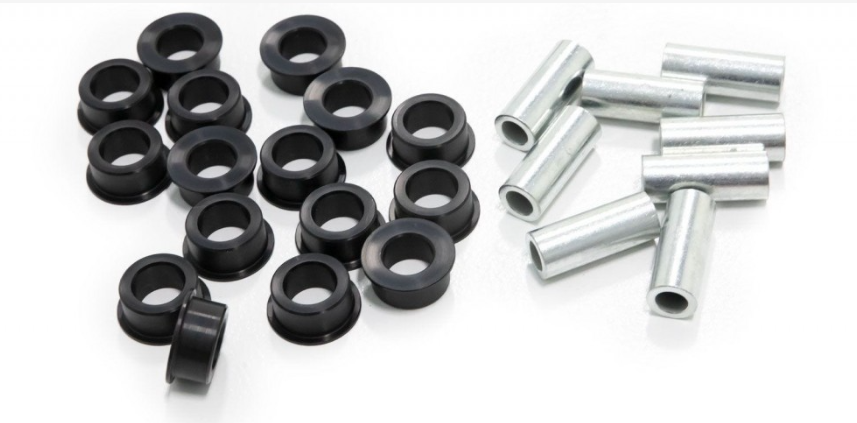
Can I retrofit my existing equipment with UHMW bushings for improved performance?
Yes, retrofitting your existing equipment with UHMW (Ultra-High Molecular Weight Polyethylene) bushings can be a beneficial solution for improving performance. Here’s a detailed explanation:
Retrofitting involves replacing the existing bushings in your equipment with UHMW bushings, which offer several advantages:
1. Friction Reduction:
UHMW bushings have excellent self-lubricating properties and a low coefficient of friction. By replacing traditional bushings with UHMW bushings, you can significantly reduce friction between moving parts. This results in smoother operation, improved energy efficiency, and reduced wear on components.
2. Wear Resistance:
UHMW bushings exhibit exceptional wear resistance, even in demanding applications. By retrofitting your equipment with UHMW bushings, you can enhance the durability and longevity of machinery components. The wear resistance of UHMW bushings helps minimize the need for frequent maintenance and replacement, reducing downtime and overall operating costs.
3. Noise Reduction:
UHMW bushings have inherent noise-dampening properties. Retrofitting your equipment with UHMW bushings can help reduce noise levels generated during operation. The self-lubricating properties of UHMW bushings minimize friction-induced vibrations and noise, resulting in a quieter working environment and improved operator comfort.
4. Corrosion Resistance:
UHMW bushings are highly resistant to corrosion and chemical attack. By retrofitting your equipment with UHMW bushings, you can improve the corrosion resistance of the machinery components. This is particularly beneficial in applications where the equipment is exposed to harsh environments or corrosive substances.
5. Customization:
UHMW bushings can be customized to fit specific equipment requirements. They can be machined or molded to match the dimensions and specifications of the existing bushings, allowing for a seamless retrofitting process. This ensures proper fit and compatibility with the machinery components.
6. Cost-Effective Solution:
Retrofitting your existing equipment with UHMW bushings can be a cost-effective solution compared to purchasing new machinery. It allows you to upgrade the performance and functionality of your equipment without the need for a complete replacement. This can result in significant cost savings while still achieving improved performance.
Before retrofitting your equipment with UHMW bushings, it’s important to consider factors such as the design of the equipment, load requirements, operating conditions, and compatibility with other components. Proper installation and alignment of the UHMW bushings are crucial to ensure optimal performance and longevity.
In summary, retrofitting your existing equipment with UHMW bushings offers numerous benefits, including friction reduction, wear resistance, noise reduction, corrosion resistance, customization, and cost-effectiveness. By upgrading your equipment with UHMW bushings, you can enhance performance, extend component life, reduce maintenance needs, and achieve improved overall efficiency.

Are there potential challenges or limitations to using UHMW bushings?
While UHMW (Ultra-High Molecular Weight Polyethylene) bushings offer many advantages, there are also potential challenges and limitations to consider. Here’s a detailed explanation:
1. Temperature Limitations:
UHMW bushings have a relatively low melting point compared to other engineering plastics. They can soften or deform at elevated temperatures, typically around 82°C (180°F) or lower, depending on the specific grade and formulation. If your application involves high temperatures, alternative materials or additional heat-resistant measures may be necessary.
2. Wear and Abrasion:
While UHMW has excellent wear resistance, it may not be suitable for applications with extremely abrasive conditions or high levels of impact. In situations where there are aggressive abrasive particles or substantial mechanical forces, alternative materials or protective measures, such as incorporating additional bearing surfaces or coatings, may be required.
3. Load and Pressure Limitations:
UHMW bushings have a relatively low compressive strength compared to metals and some other engineering plastics. They may not be suitable for applications with high loads or pressure requirements. Exceeding the recommended load or pressure limits can lead to premature wear, deformation, or failure of the bushings. Consideration should be given to the specific load and pressure conditions of your application and alternative materials may need to be considered for heavy-duty applications.
4. Creep and Relaxation:
UHMW has a tendency to exhibit creep or relaxation under continuous or long-term mechanical stress. This means that over time, the material may slowly deform or experience dimensional changes. It is important to consider the duration and magnitude of the applied stress in relation to the specific UHMW grade being used and the desired performance criteria. In applications where dimensional stability is critical, periodic monitoring and potential adjustments or replacements may be necessary.
5. Chemical Compatibility:
While UHMW is chemically resistant to many substances, it may not be compatible with certain chemicals or solvents. It is important to consider the specific chemical environment in which the bushings will operate and verify the compatibility of UHMW with the substances involved. In cases where chemical resistance is a primary concern, alternative materials may need to be considered.
6. Dimensional Stability:
UHMW bushings can exhibit slight dimensional changes due to factors such as moisture absorption or temperature variations. While these changes are relatively small compared to some other materials, they should be taken into account in applications where precise tolerances or tight clearances are critical.
7. Machining and Fabrication:
Although UHMW is generally considered to be a machinable material, it can present challenges during machining due to its low thermal conductivity and high coefficient of thermal expansion. Proper tool selection, cutting parameters, and machining techniques specific to UHMW should be employed to achieve desired results. Working with experienced manufacturers or fabricators who are knowledgeable about UHMW machining is recommended.
In summary, while UHMW bushings offer numerous advantages, it is important to be aware of potential challenges and limitations related to temperature, wear and abrasion, load and pressure, creep and relaxation, chemical compatibility, dimensional stability, and machining. By carefully assessing these factors in relation to your specific application requirements, you can make informed decisions and potentially address these limitations through alternative materials, modifications, or protective measures.

What is UHMW, and how is it used in the manufacturing of bushings?
UHMW (Ultra-High Molecular Weight Polyethylene) is a type of thermoplastic polymer known for its exceptional strength, durability, and low friction properties. It is commonly used in the manufacturing of bushings due to its unique characteristics. Here’s a detailed explanation:
Properties of UHMW:
UHMW possesses several key properties that make it suitable for bushing manufacturing:
- High Molecular Weight: UHMW has an extremely high molecular weight, which contributes to its excellent strength and toughness. It allows UHMW to withstand high loads and impact forces without deformation or failure.
- Low Friction: UHMW has a very low coefficient of friction, which means it exhibits minimal resistance to sliding or rubbing against other surfaces. This low friction property reduces wear and frictional heat generation, making it an ideal material for bushings.
- Self-Lubricating: UHMW has inherent self-lubricating properties, meaning it requires minimal external lubrication to reduce friction. Its molecular structure allows for the formation of a lubricating film on the surface, reducing the need for additional lubrication.
- Chemical Resistance: UHMW is highly resistant to many chemicals, acids, solvents, and other corrosive substances. This chemical resistance helps protect the bushings from degradation and ensures their long-term performance in various environments.
- Abrasion Resistance: UHMW exhibits excellent abrasion resistance, enabling it to withstand wear caused by repetitive sliding or rubbing motions. This property is critical for bushings that experience frequent motion and contact with other components.
- Low Water Absorption: UHMW has low water absorption properties, which means it does not absorb moisture easily. This characteristic helps prevent swelling, distortion, or dimensional changes in the bushings when exposed to moisture or humidity.
Manufacturing of Bushings:
UHMW is used in the manufacturing of bushings through various processes such as injection molding, compression molding, or machining. The specific manufacturing method depends on the desired shape, size, and application requirements of the bushings.
During the manufacturing process, UHMW can be formed into bushings with precise dimensions and tolerances. The material’s high strength allows it to withstand the loads and forces experienced by bushings, while its low friction properties contribute to smooth operation and reduced wear.
UHMW bushings find applications in a wide range of industries, including automotive, machinery, food processing, material handling, and more. They are commonly used in applications where low friction, high wear resistance, chemical resistance, and dimensional stability are essential.
Overall, UHMW is a versatile material that offers exceptional properties for bushing manufacturing, making it a popular choice for various industries and applications.


editor by CX 2024-02-13